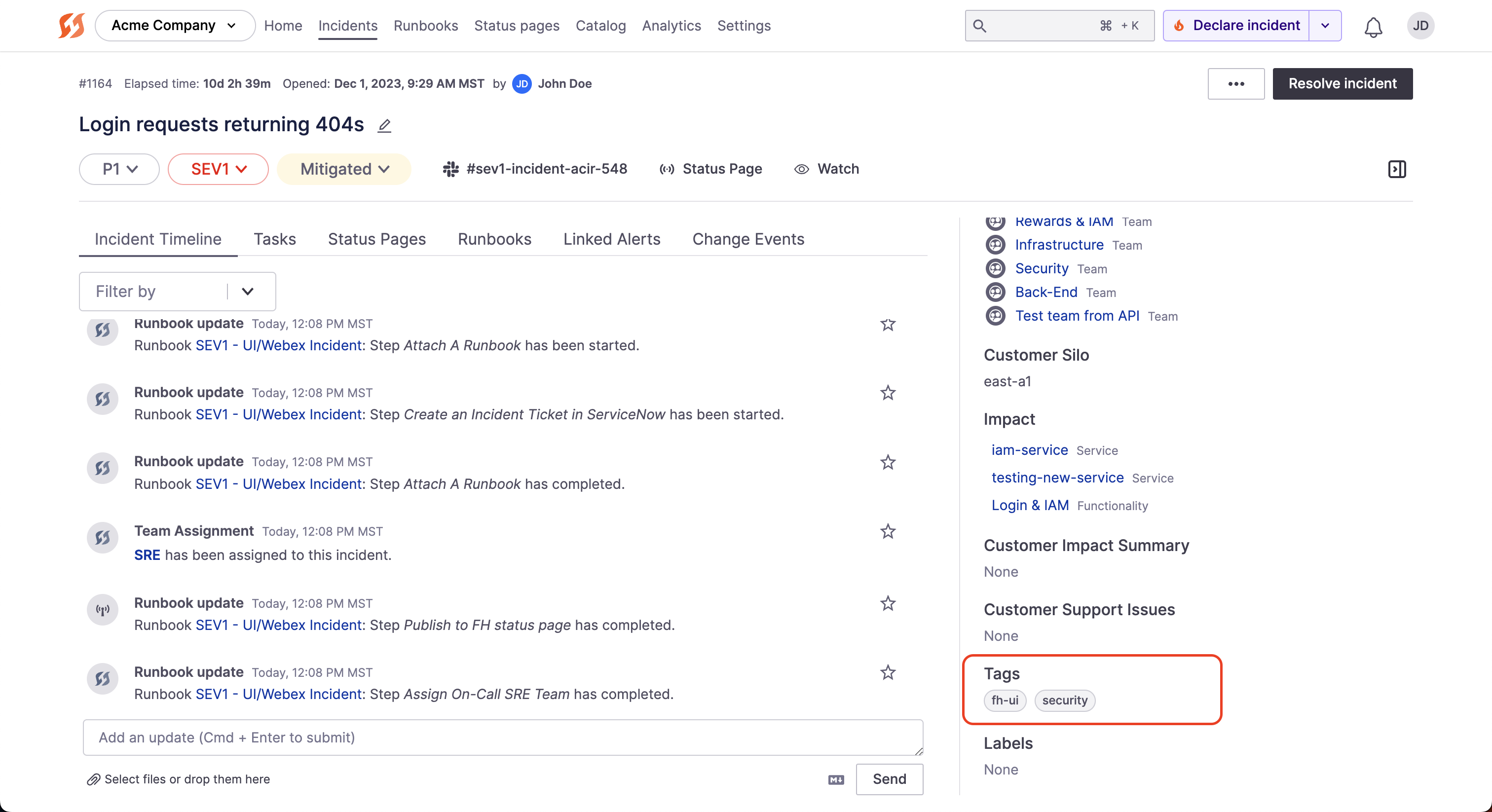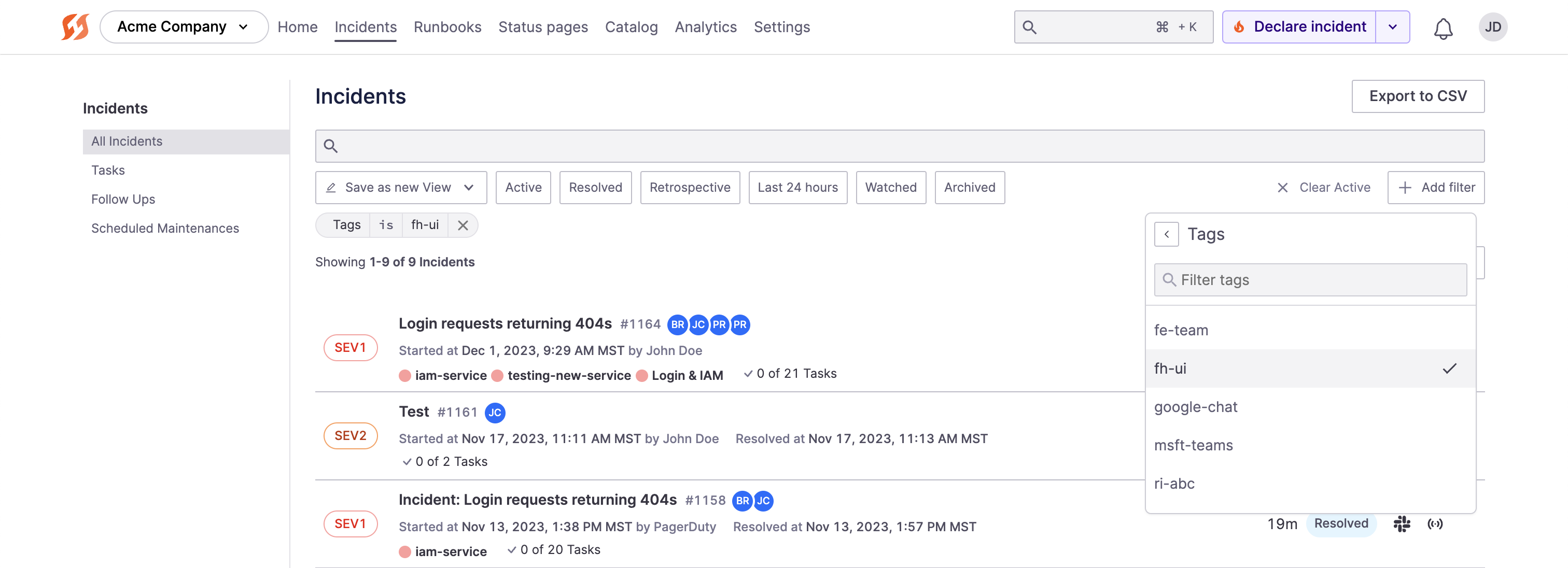Incident Tags
Tags allow FireHydrant users to organize and otherwise track different incident data. This allows both searching and querying for incidents with specific tags, as well as filtering Analytics and metrics by said tag(s).
In addition, tags can also be used as conditional triggers for Runbooks and Runbook steps (e.g. if an incident is tagged 3rd-party, then execute Runbook 3rd-Party Outage Runbook, for example).
Creating new tags
New tags are created in the same places users will add tags to incidents. If a tag does not exist, it will be created. See the next section.
Adding tags to an incident

Tags section of the Command Center

Running /fh tags in the Slack incident channel
You can add tags to an incident by:
- Typing a tag name on the declare incident form in the UI or in Slack
- Editing the Tags section in the right-side Details panel of the The Command Center mid-incident
- Executing
/fh tagscommand in an active incident channel in Slack - Running
/fh editor/fh add tagscommand in an active incident channel in Slack* - Via Incident Types, where you can declare incidents with preset fields and values including tags
- Via the API, either creating a new incident or updating an existing one
*Note:
You'll need to make sure the "Tags" field is set to Visible or Available in the Incident Fields
Using Tags
Filtering
Once you've tagged some incidents, you'll be able to filter by tags on both the Incidents page as well as on the Analytics page.

Tag filtering on the Incidents page
Automation through tags
Tags also work as Runbook conditions. You can kick off individual Runbook steps, or attach new Runbooks to an incident with tags. To learn more, see Introduction to Runbooks.
Next Steps
- Learn more about tracking custom data via Custom Fields
- Pre-template fields and values, including tags, using Incident Types
Updated 5 months ago
